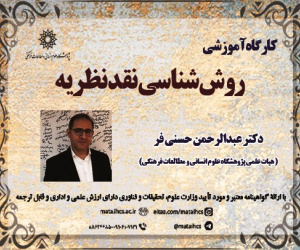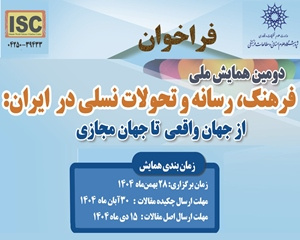بررسی روایت آیه نگارانه ی تاریخ نگاری صفوی از قدرت گیری شاه اسماعیل (مقاله علمی وزارت علوم)
درجه علمی: نشریه علمی (وزارت علوم)
آرشیو
چکیده
قدرت گیری شاه اسماعیل صفوی (930-907ق) و تشکیل سلسله صفویان، یکی از مهم ترین حوادث تاریخ ایران محسوب می شود. مورخان دوره صفوی به طور ویژه به این حادثه توجه کرده اند و درنتیجه، به یکی از محورهای مهم تاریخ نگاری صفویان تبدیل شده است. مهم ترین و غالب ترین دیدگاه حاکم بر بازتاب این حادثه در جریان تاریخ نگاری صفویان، ارائه روایت دینی و مذهبی از این رویداد بوده است. این نوع نگاه، متأثر از نگرش دینی حاکم بر جریان تاریخ نگاری ایران به طور عام و ماهیت مذهبی صفویان به صورت خاص بوده و در همین راستا، استفاده از آیات قرآن کریم مهم ترین محور روایت مورخان صفوی از قدرت گیری شاه اسماعیل قرار گرفته است. مسئله اصلی این پژوه، بررسی نقش آیات قرآن در روایت تاریخ نگاری صفویان از قدرت گیری شاه اسماعیل است. یافته های پژوهش نشان می دهد که روایت آیه نگارانه مورخان صفوی از قدرت گیری شاه اسماعیل در پنج مؤلفه انعکاس یافته است: مشروعیت بخشی به حکومت، روایت آیه نگارانه از پیروزی های شاه اسماعیل، توصیف مخالفان، ایجاد شباهت میان احوال شاه اسماعیل و پیامبران الهی و درنهایت، توجیه اقدامات اغلب خشن شاه اسماعیل. مشروعیت بخشی مهم ترین دغدغه مورخان صفوی بود و دو محور داشت: نخست مشروعیت دادن به کلیت حکومت صفویان و دوم مشروعیت بخشی به حکومت و اقدامات شاه اسماعیل. مورخان صفوی در همین جهت تلاش داشتند از آیات همسو با این اهداف استفاده کنند.Examination of the Quranic Narrative in the Safavid Historiography of Shah Ismail's Rise to Power
The ascension of Shah Ismail Safavi (907-930 AH) and the establishment of the Safavid dynasty constitute one of the most significant events in Iranian history. Scholars of the Safavid era, particularly, have focused on this event, making it a pivotal aspect of Safavid historiography. The prevailing perspective shaping the reflection of this event in Safavid historiography is the presentation of a religious and doctrinal narrative. This approach, influenced by the religious outlook prevalent in Iranian historiography and the specific religious nature of the Safavids, underscores the use of Quranic verses as a central theme in Safavid historians' accounts of Shah Ismail's rise to power. The primary concern of this research is to investigate the role of Quranic verses in the Safavid historiographical narrative of Shah Ismail's ascension. The findings of the study indicate that the Quranic narrative of Safavid historians on Shah Ismail's rise is reflected in five components: legitimizing the rule, Quranic narrative of Ismail's victories, describing opponents, drawing parallels between Ismail's life and divine prophets, and ultimately justifying Ismail's often violent actions. Legitimizing the rule was the primary concern of Safavid historians and had two axes: legitimizing the entirety of Safavid rule and legitimizing the rule and actions of Shah Ismail. Safavid historians have endeavored to use Quranic verses in line with these objectives.






